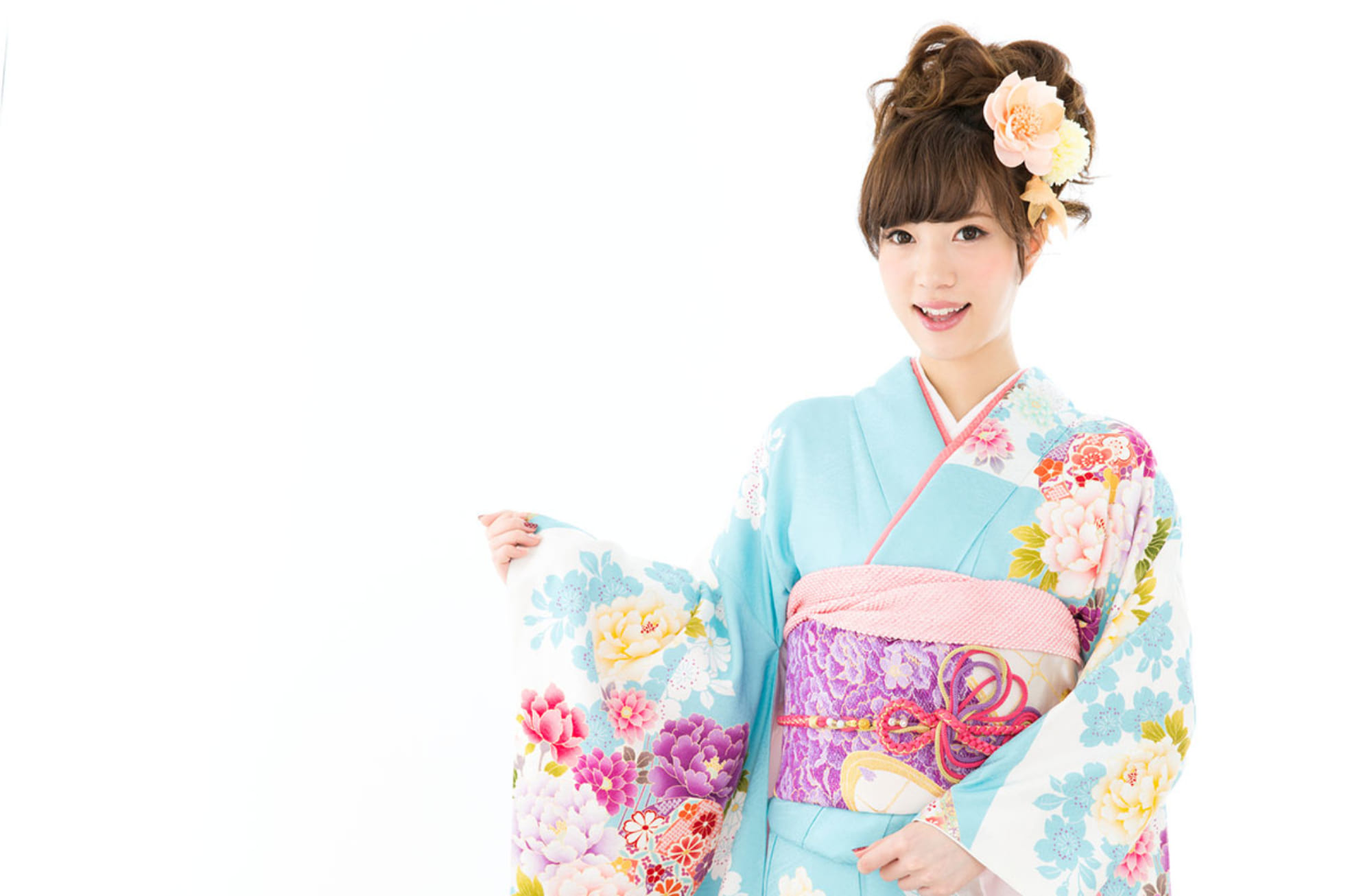Komon
A dyeing process in which Japanese paper stencils and glue are used to create small patterns. During the Edo period, they were used by the men in samurai families, but they later became popular with common townswomen because of the delicate patterns.
Komon is distinctive because of the small prints covering the whole fabric. Unlike tsukesage, prints fall in all directions. For tobigara, the prints are further apart from one another, while for sougara, the prints are packed tightly into a brilliantly-patterned fabric.
Bingata komon combines bright colors and designs, and a special technique called kumadori is used to add color by hand. Okinawan bingata flourished after the war and was designated an intangible cultural asset of the prefecture. After the war, an Edo komon craftsman was named an Important Intangible Cultural Property (Living National Treasure) to differentiate Edo komon from other komon. Ateji (calico) is also a type of komon, and its name in China was “inkafu”, meaning printed cloth. Other types of komon include shobori komon and striped komon.
Komon is an everyday wear, and can be matched with hanhaba or Nagoya obis. Kyo-yuzen komon or sougara komon with gold foil can be matched with a fukuro obi for a more elegant look.
[quote style=”boxed”]In Japanese
小紋
小さな模様を和紙の型紙を使って糊で染まらないように防染して染める技法です。江戸時代に武家の男性に使われ、後に町人女性に粋な柄として好まれ広まりました。
全体に細かい模様が入っているのが特徴です。付下げとの違いは、上下関係なく模様が入っていることで、飛び柄では無地の部分が多く、総柄では柄で埋め尽くされた華やかなものになります。
紅型小紋もあり、紅型はあふれる色と意匠が調和しており、図柄には隈取りという独特の手法で色を際立たせます。琉球紅型は、戦後に復興され、県の無形文化財に指定されます。江戸小紋は戦後に他の小紋と区別するために人間国宝に指定されました。また更紗も小紋のひとつで中国では更紗のことを印花布と書いていんかふと呼びました。ほかに絞り小紋や縞模様の小紋もあります。
小紋は基本的には普段着で、半幅帯や名古屋帯で個性を出してあわせます。京都型友禅や箔のある総柄小紋などでは袋帯を合わせても豪華になります。
[/quote]
